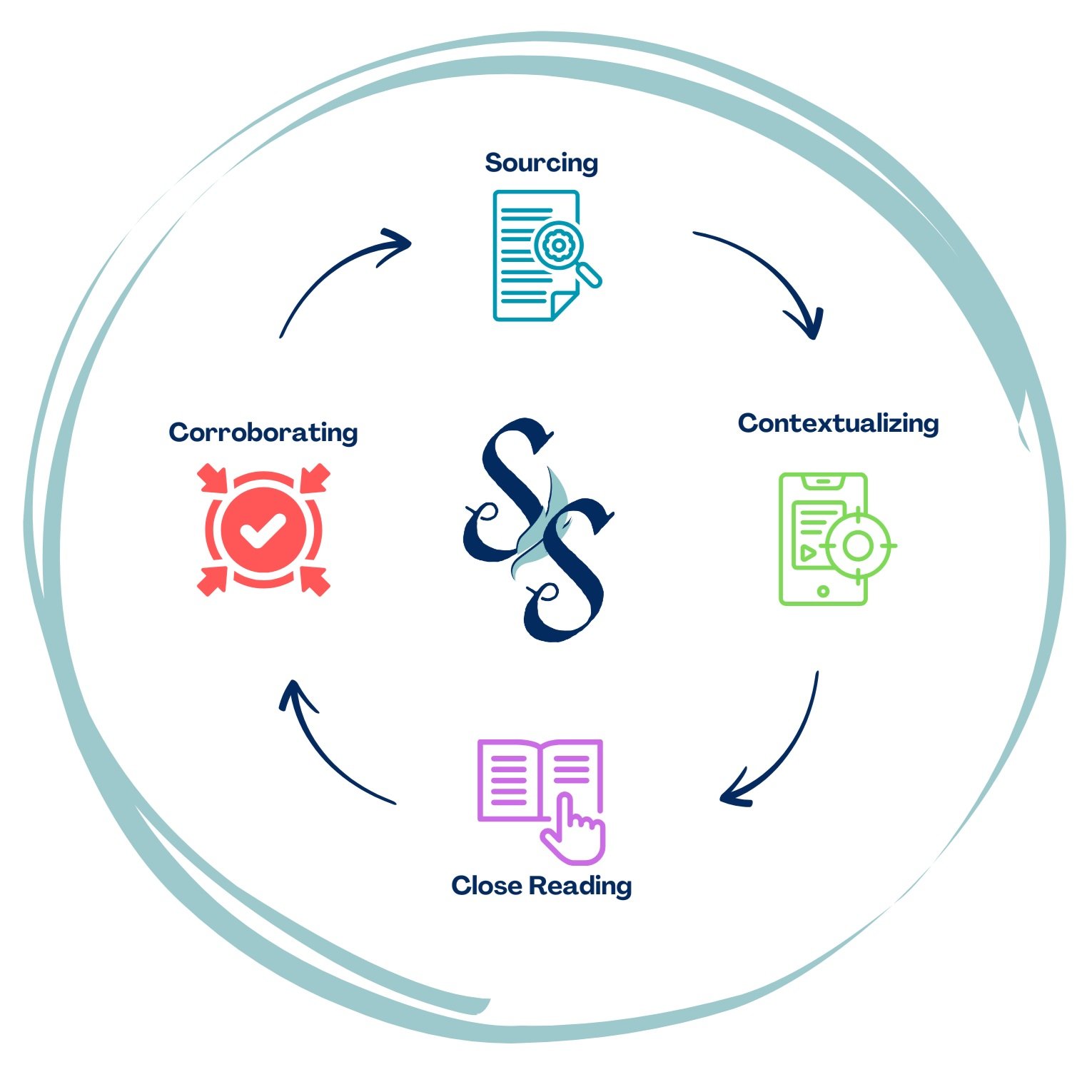AP African American Studies
Supplemental Curriculum
Our AP African American Studies Supplemental Curriculum features lessons aligned to the instructional topics, learning objectives, and essential knowledge within the AP African American Studies Course and Exam Description.
Each lesson is designed to use the Source Squads Process to support the interrogation of the course’s required sources. They feature a curated set of required sources, step-by step procedure, slide deck, Inquiry Map, and Squad Goals.
Interested in bringing Source Squads to your AP African American Studies course? Visit our store to purchase a teacher subscription, or fill out this form if you are interested in bringing this to your entire school or district.
-
How did trade influence the development of the Sudanic Empires?
This lesson has students explore the rise of the Sudanic Empires: Ghana, Mali, and Songhai. Through the interrogation of historical materials, students learn the influence and power of these kingdoms, along with the influence of trade on their development.
-
How did the adoption of Christianity transform the Kingdom of Kongo?
This lesson has students learn about the voluntary conversion of the Kingdom of Kongo to Christianity at the end of the fifteenth century. In it, students learn how the event both contributed to the rise of the transatlantic slave trade, while also resulting into a unique cultural transformation for the people of Kongo.
-
How did African resistance on slave ships influence antislavery arguments and strategy?
This lesson has students explore the resistance of African captives on slave ships, and its influence on the abolition movement. From it, students connect the agency of African captives to abolitionist action, from circulated slave ship depictions to funding court cases for resisting Africans.
-
What was the legacy of the Haitian Revolution around the world?
In this lesson, students consider the various ways in which the Haitian Revolution reverberated throughout the world. Specifically, students explore the revolutionary ideals and values of the Haitian Constitution before interrogating Frederick Douglass’ lecture on Haiti a century later to reflect on the legacy and impact of this historic moment.
-
How did the expansion of slavery influence relationships between Black and Indigenous people?
This lesson asks students to explore the impact of the expansion on slavery on Black and Indigenous people during the nineteenth century. Most of the required sources provide an insight into Black Seminoles who were involved or affected by the Second Seminole War, while the last provides an example of agency from enslaved people living in Indigenous communities.
-
How did the Reconstruction Amendments redefine American citizenship?
This lesson has students interrogate the Reconstruction Amendments and how they helped to redefine what it meant to be an American citizen. Additionally, students explore the significance of newfound Black freedoms and rights, particularly in the election of African American politicians during Reconstruction.
-
How did African Americans respond to white supremacist attacks in the early twentieth century?
This lesson asks students to explore racial violence in the early twentieth century. In it, students explore primary source material that asks them to consider both the causes and response to attacks by white supremacist attacks.
-
How did “self-help” during Jim Crow help to grow Black organizations and institutions?
This lesson has students explore Black organizations and institutions in the era of “self-help” for African Americans. Students interrogate primary sources connected to Black entrepreneurs and their organizations, and look to consider how they both served the needs of Black communities while creating opportunities for activism and change.
-
How did Harlem Renaissance poets express their relationships to Africa in their poetry?
In this lesson, students analyze two poems from the Harlem Renaissance to better understand how African Americans of the early 20th century grappled with their heritage.
-
How did World War II impact African Americans’ pursuit of equal rights?
Here, students explore the role of African Americans in World War II along with the legacy of their service. Through an interrogation of James Thompson’s "Double Victory Campaign" and related photographs, students evaluate the goals and outcomes of their involvement.


